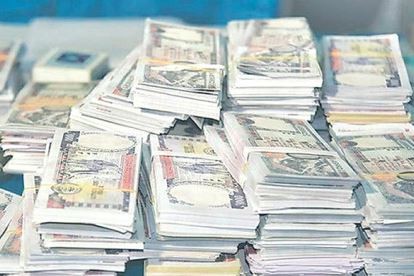Remittance inflow declines

By A Staff Reporter
Kathmandu, Nov :11 The country has received remittance worth Rs. 153.73 billion in the first two months of the current fiscal year.
The remittance inflow decreased by 0.3 per cent to Rs. 153.73 billion during the review period compared to an increase of 33.4 per cent in the same period the previous year, according to a macroeconomic and financial report of the Nepal Rastra Bank (NRB).
Remittance inflow increased by 2 per cent to Rs.75.40 billion in the first month of the current fiscal year compared to an increase of 33.1 per cent in the same period the previous year.
In the US Dollar term, such inflow decreased by 1.3 per cent in the review period compared to 22.3 per cent increase in the corresponding period of the previous year.
Net transfer receipt increased by 0.8 per cent to Rs.176.39 billion in the review period. Such receipt had increased by 34.1 per cent in the same period the previous year.
Number of Nepali migrant workers (institutional and individual-new and legalised) increased by 0.2 per cent in the review period, the report said.
It had decreased by 39 per cent in the same period the previous year.
The number of Nepali workers (Renew entry) migrated for foreign employment increased by 10.3 per cent in the review period.
It had decreased by 9.8 per cent in the same period the previous year.
According to Dr. Gunakar Bhatta, executive director of NRB, the inflow of remittance has decreased due to decline in the outflow of migrant workers.
“The migration of workers to Malaysia has stopped for a long time, which led to the decrease in the remittance inflow in Nepal,” he said.
Lately, employment opportunity was increasing in the country and this was also major reason behind the decrease in the number of Nepali migrant workers, leading to downsizing of the remittance inflow, he said.
“The inflow of remittance will remain stable in the coming years. We cannot expect an increase in the inflow of remittance in line with the last year’s ratio.
Remittance had increased significantly for the last two years after the government adopted new steps,” he said.
Stronger US dollar against Nepali currency, high interest rate provided by the banks and financial institutions and tightening of the informal trade by the government for the last years also contributed to the increased inflow of remittance then, he said.
Economist Dr. Chandramani Adhikari said that the migrant workers declined after the devastating earthquake, whose impact was noticed in remittance inflow.
“It is natural to decrease the inflow of remittance as the remittance inflow was reached the upper limit. There are a few chances to see a growth of remittance inflow in the days to come,” he said.
Recent News

Do not make expressions casting dout on election: EC
14 Apr, 2022
CM Bhatta says may New Year 2079 BS inspire positive thinking
14 Apr, 2022
Three new cases, 44 recoveries in 24 hours
14 Apr, 2022
689 climbers of 84 teams so far acquire permits for climbing various peaks this spring season
14 Apr, 2022
How the rising cost of living crisis is impacting Nepal
14 Apr, 2022
US military confirms an interstellar meteor collided with Earth
14 Apr, 2022
Valneva Covid vaccine approved for use in UK
14 Apr, 2022
Chair Prachanda highlights need of unity among Maoist, Communist forces
14 Apr, 2022
Ranbir Kapoor and Alia Bhatt: Bollywood toasts star couple on wedding
14 Apr, 2022
President Bhandari confers decorations (Photo Feature)
14 Apr, 2022











